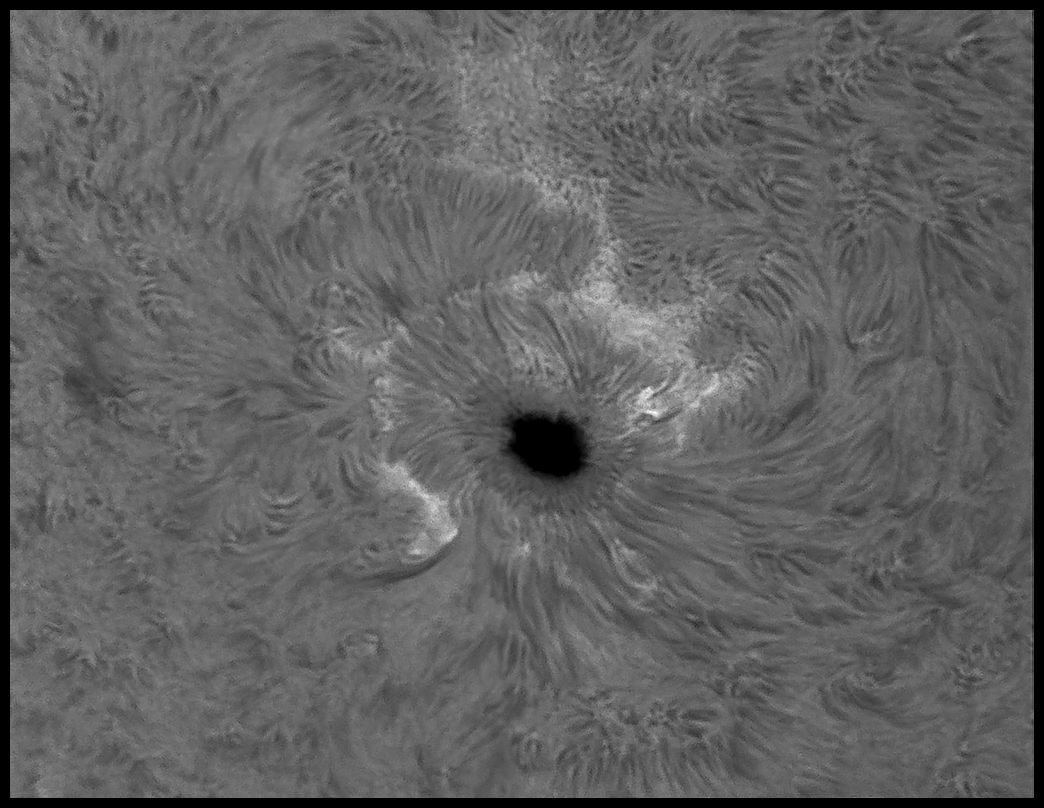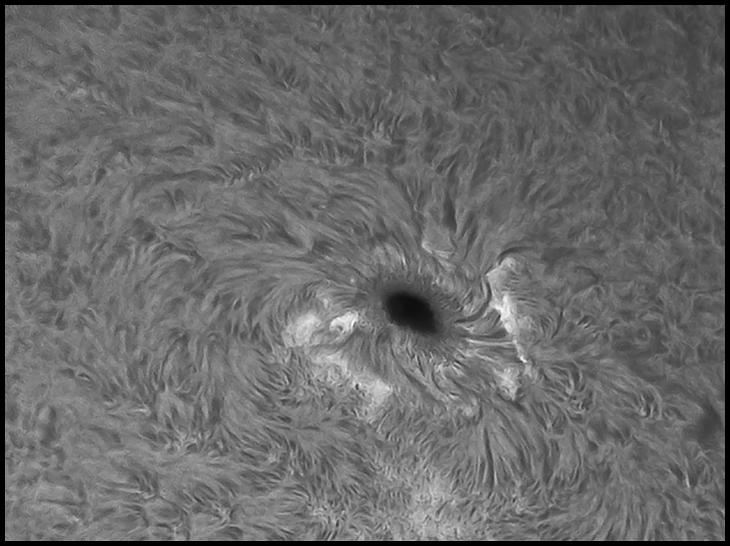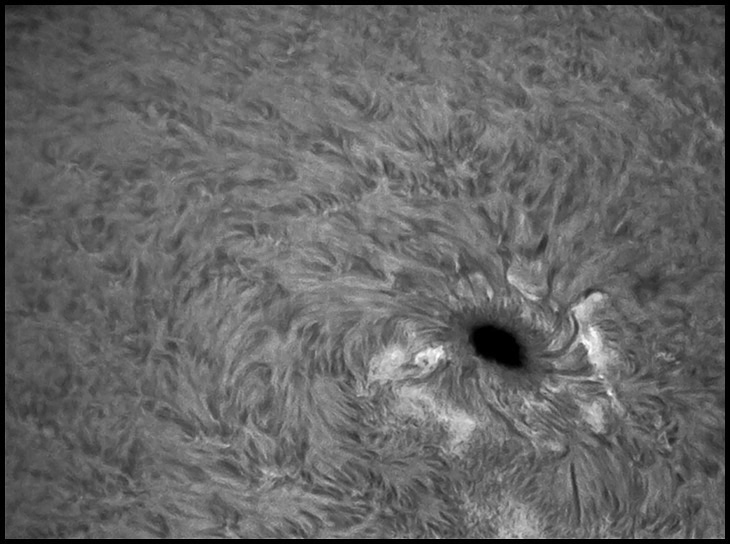With Enough Computer
05/22/2016. Registax is a different animal when it's running on a machine with enough horsepower to allow it to behave interactively.
There's a huge sunspot making its way across the Sun. It's an immense but simple pimple. It's throwing no flares or fireworks, but is at the center of enough magnetism to make the area interesting. Here's a decent look around noon today:

Two, 1000 frame clips. Best 200 of each.
FireCapture, AVIStack 2, Registax, Photoshop
After stacking in AVIStack, pull the finished FIT into Registax 6. Then use wavelets. Start with Layer 3. Move the layer's slider to the right, then start increasing the "sharpening" coefficient. When noise appears (or reaches a level that is no longer acceptable), back off the sharpening and/or increase the "denoise" coefficient. Then advance the 5th layer. And the 1st. Search for their optimal settings to balance sharpening and noise as with layer 3. Adjust weights to suit. And practice, Mister, practice. Save as a 16-bit TIFF and finish in Photoshop. Those lovely "liquid" tones are still elusive, but I sometimes glimpse them in the midst of processing. I actually did something like this way back in the beginning of my hydrogen-alpha fetish, but now I can see what the various levers and buttons do.
I had hoped the new Zwo camera might not exhibit fatal Newton's rings, but they similar to the ones in the previous camera, so I need to keep the tilt adapter in the imaging chain.
OK , let's get serious here. I measured one of the transit of Mercury images that included the solar limb. The image scale (see here) works out to 0.15 arc seconds per pixel. That's excessive with the aperture I'm using and the seeing with which I contend. I worked out reasonable scales back when I was experimenting with barlows, compressors, the 152mm Kunming, and the present 90mm Orion --almost four years ago!-- but that was before I introduced the tilt-ring to get rid of Newton's rings. When I did that, the tilt adapter added substantially to the extension of the barlow and the effective focal length. I was so pleased with the elimination of Newton's rings that I never bothered to do anything about the ridiculous image scale.
The only thing I ever use that Barlow for is solar imaging, so I took some silicone glue and moved the barlow from the tip of the snout to the inside rear where it is now glued into the notch I machined for it way back when. A quick look through the pines says the image scale has been reduced by about 50%. A more leisurely afternoon session says this may work very well:

Best 100 of 500 frames
Next, a 16-bit .SER file to see what that's like with sufficient computing power. Among the disadvantages: half the frame rate and twice the file size. But all those extra levels help histogram and deconvolution processes. Highlights are served particularly well by the added bit depth. Finer details emerge from what are essentially blocked up highlights in 8-bit space.

As a side by side comparison, this is lacking since I didn't have an appropriate flat to apply to the .SER file. Next time.
I am chagrined. I went looking back through these pages, and I see that I am re-solving problems I solved 3-4 years ago. There was a period back then when my images were at least as good as they are now, maybe better. I have GOT to do this stuff more often than every several weeks.